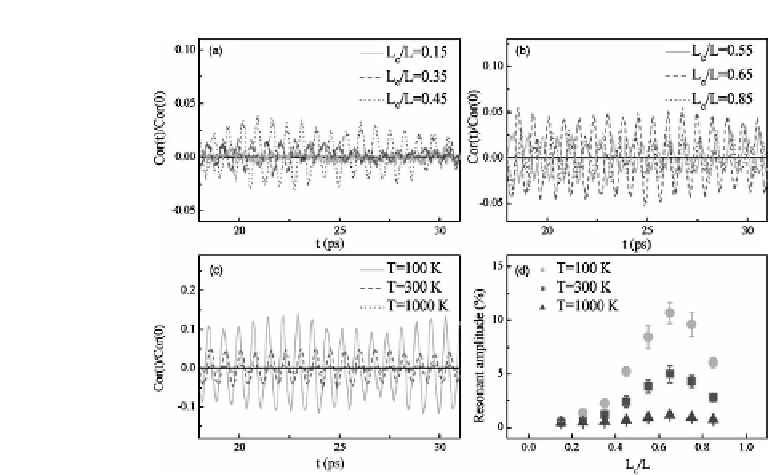Environmental Engineering Reference
In-Depth Information
Figure 1.25
Structureandtemperaturedependenceoftheoscillationeffect
in Ge/Si core-shell NWs. (a)
L
c
/
L
=
0.15,
L
c
/
L
=
0.35, and
L
c
/
L
=
0.45 at
300K.(b)
L
c
/
L
=
0.55,
L
c
/
L
=
0.65,and
L
c
/
L
=
0.85at300K.(c)
L
c
/
L
=
0.65
at 100 K, 300 K, and 1000 K. (d) Oscillation amplitude versus core-shell
ratio
L
c
/
L
at 100 K,300 K,and 1000 K.
is long enough, the long-time tail of HCACF decays to approximately
zero.
However, an obvious oscillation up to a very long time appears
in HCACF for core-shell NWs. The long-time region of HCACF
reveals that this oscillation has a periodic structure. Furthermore,
this oscillation effect exhibits an obvious structure dependence:
when the core-shell ratio increases, it becomes stronger, reaches
its maximum amplitude at
L
c
/
L
=
0.65, and then decreases, as
showninFig.1.25a,b.Moreover,foragivencore-shellstructure,the
oscillationamplitudeistemperaturedependentandbecomeslarger
at lower temperature (Fig. 1.25c,d). The structure and temperature
dependence of the oscillation in HCACF suggest that there exists a
coherent mechanism in core-shell NWs, which can cause phonons
to havethe long-lastingcorrelation in such heterostructure.
Next, we carry out extensive spectrum analysis by using the
fast Fourier transform (FFT). We calculate the FFT of the long-








